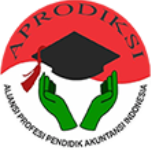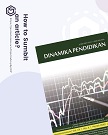The Effectiveness of Rapid Typing Software and Module for Improving 10-Finger Typing Skills
(1) Yogyakarta State University, Karangmalang, Yogyakarta 55281
(2) Yogyakarta State University, Karangmalang, Yogyakarta 5528
Abstract
This research aims to know the effectiveness of rapid typing software and module in improving students typing skills. The program of Automatic Expertise and Office Governance requires students to be able to master typing skills. The population of the study was 62 students of class X OTKP 1 and OTKP 2 in SMK N 7 Yogyakarta. Samples were 30 students of class X OTKP 2 and the class selection used simple random sampling technique. The data collection methods were text typing skills documentations and Multivariate Analysis of Variance (MANOVA) test method was used for the data analysis. The simultaneous test results show the significance of 0.000 < 0.05, it means all variables have a significant influence on typing skills. While the test results partially indicate that the rapid typing software and module only have a significant influence on the sub competence of typing speed, but no impact on the accuracy of typing. Based on these findings it can be concluded that rapid typing software and modules have a significant and effective influence in improving typing skills. Rapid typing software cannot only be used in schools but can also be applied in offices, government agencies and private sectors.
Keywords
Full Text:
PDFReferences
Baker, N. A., & Redfern, M. S. (2007). The association between computer typing style and typing speed. Proceedings of the Human Factors and Ergonomics Society Annual Meeting, Vol. 51(No. 15), pp. 869–873.
Cahyani, S. T., & Witurachmi, S. (2013). Implementasi Pendidikan Karakter pada Mata Pelajaran Produktif Akuntansi di Smk Negeri 3 Surakarta. Jupe-Jurnal Pendidikan Ekonomi, 1(2).
Cerni, T., Longcamp, M., & Job, R. (2016). Acta Psychologica Two thumbs and one index : A comparison of manual coordination in touch-typing and mobile-typing. ACTPSY, 167, 16–23. http://doi.org/10.1016/j.actpsy.2016.03.007
Chwirka, B., Gurney, B., & Burtner, P. A. (2002). Keyboarding and Visual-Motor Skills in Elementary Students : A Pilot Study Occupational Therapy In Health Care Keyboarding and Visual-Motor Skills in Elementary Students : A Pilot Study. Occupational Therapy in Health Care, 16(2-3)(December 2015), 39–51. http://doi.org/10.1080/J003v16n02
Hadade, H. I. (2015). Efektivitas Penggunaan Komputer Sebagai Media Presentasi terhadap Peningkatan Penjas. Pedagogia, 13(3), 180–194.
Harwati, D. S., & Yanto, H. (2017). Vocational High School (SMK) Students Accounting Competence Prediction Model by Using Astin I-E-O Model. Dinamika Pendidikan, 12(2), 98–113. http://doi.org/10.15294/dp.v12i2.10826
Lin, C. H., & Liu, E. Z. F. (2009). A comparison between drill-based and game-based typing software. In Transactions on Edutainment III, pp. 48–58 Springer, Berlin, Heidelberg.
Lubbe, E., Monteith, J., & Mentz, E. (2006). The relationship between keyboarding skills and self-regulated learning. South African Journal of Education, 26(2), 281–293.
McGlashan, H. L., Blanchard, C. C. V, Sycamore, N. J., Lee, R., French, B., & Holmes, N. P. (2017). Human Movement Science Improvement in children ’ s fi ne motor skills following a computerized typing intervention. Human Movement Science, 56(December 2016), 29–36. http://doi.org/10.1016/j.humov.2017.10.013
Poole, D. M., & Preciado, M. K. (2016). Computers & Education Touch typing instruction : Elementary teachers ’ beliefs and practices. Computers & Education, 102, 1–14. http://doi.org/10.1016/j.compedu.2016.06.008
Preminger, F., Weiss, P. L. T., & Weintraub, N. (2004). Predicting occupational performance: Handwriting versus keyboarding. American Journal of Occupational Therapy, 58((2)), 193–201.
Priyatama, A. A., & Sukardi, S. (2015). Profil kompetensi siswa SMK kompetensi keahlian teknik kendaraan ringan di kota pekalongan. Jurnal Pendidikan Vokasi, 3(2), 153–162.
Saeroji, A. (2014). Inovasi Media Pembelajaran Kearsipan Electronik Arsip ( E-Arsip ) berbasis Microsoft Office Access. Dinamika Pendidikan, 9(2), 177–185.
Sedianingsih, Mustikawati, F., & Soetanto, N. P. (2010). Teori dan Praktik Administrasi Kesekretariatan. Jakarta: Prenada Media Group.
Setyawati, P. (2016). Pemanfaatan Program Aplikasi Rapid Typing sebagai Upaya Meningkatkan Keterampilan Mengetik Kelas X Program Keahlian Administrasi Perkantoran SMK Negeri 1 Surabaya. Jurnal Administrasi Perkantoran (JPAP), 4(3).
Sonhadji, A. (2015). Membangun peradaban bangsa dalam perspektif multikultural (potensi indonesia menjadi negara besar). Universitas Negeri Malang (UM) Press.
Sulastri, T. (2014). Analisis Mengetik Cepat 10 Jari Menggunakan Teknologi Komputer Berbasis Aplikasi Software Rapidtyping. Jurnal Komputer Bisnis, 4(2), 13–18.
Sutirman, M. P. (2012). Pemanfaatan Program Aplikasi Rapid Typing Sebagai Media untuk Meningkatkan Kualitas Pembelajaran Mengetik Manual. Jurnal Penelitian ADP: Pendidikan Teknik Elektro, 2.
Weintraub, N., Gilmour-Grill, N., & Weiss, P. L. T. (2010). Relationship between handwriting and keyboarding performance among fast and slow adult keyboarders. American Journal of Occupational Therapy, 64(1), 123–132.
Refbacks
- There are currently no refbacks.

This work is licensed under a Creative Commons Attribution 4.0 International License.


.png)

.png)





